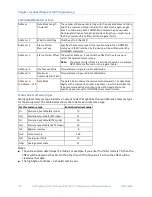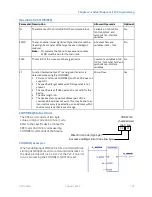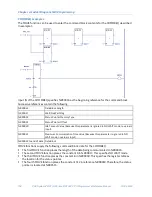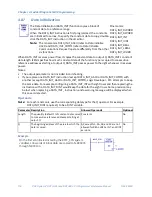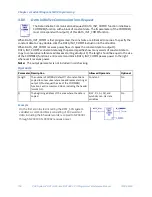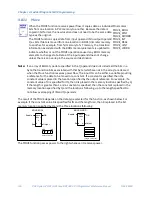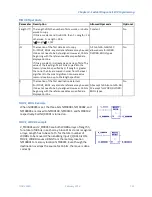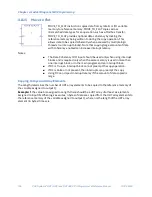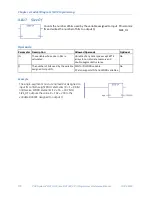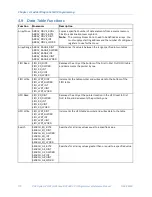
Chapter 4. Ladder Diagram (LD) Programming
164
PACSystems* RX7i, RX3i and RSTi-EP CPU Programmer's Reference Manual
GFK-2950C
4.8.14
Move From Flat
MOVE_FROM_FLAT copies reference memory data to a User-defined Data
Type (UDT) variable or UDT array.
MOVE_FROM_FLAT provides optional data coherency by locking the data
being written to during the copy operation. This allows data to be copied
coherently when accessed by multiple logic threads (i.e. interrupt blocks).
Note that copying large amounts of data with coherency enabled can
increase interrupt latency.
Operation
Copying arrays and array elements
The constant value assigned to input LEN (Length) determines the number of UDT array elements to
be filled by copying data from reference memory to output Q.
Example:
If constant value 6 is assigned to input LEN (Length), there should be a UDT array of at least six
elements assigned to output Q. During logic execution,
n
bytes of data are copied from reference
memory to the first six UDT array elements, where
n
is the length of the UDT array element (in bytes)
times six.
Copying to specified array elements
For output Q, a single element of a UDT array can be specified, for example, myUDT_array[4] (5th
element of myUDT_array). In this case, the input LEN (Length) operand applies to the array elements
starting from and including myUDT_array[4].
Example:
myUDT_array is a UDT array of ten elements, of which each element is a UDT variable, and
myUDT_array[4] is assigned to output Q. This restricts the value of input LEN (Length) to six or less
because there are six remaining UDT array elements that can be filled in myUDT_array.
Notes:
▪
Length determines how many UDT variable elements to overwrite in Q.
▪
If an array head is assigned to input IN, the Length determines how many UDT array elements
assigned to Q are filled by copying data from reference memory.
Summary of Contents for PACSystems RSTi-EP
Page 357: ......
Page 466: ...Chapter 9 Diagnostics GFK 2950C February 2018 451 ...



